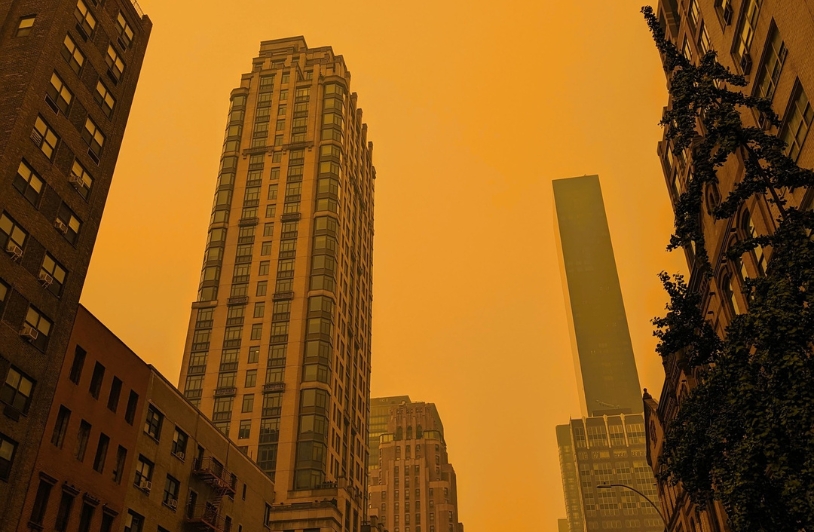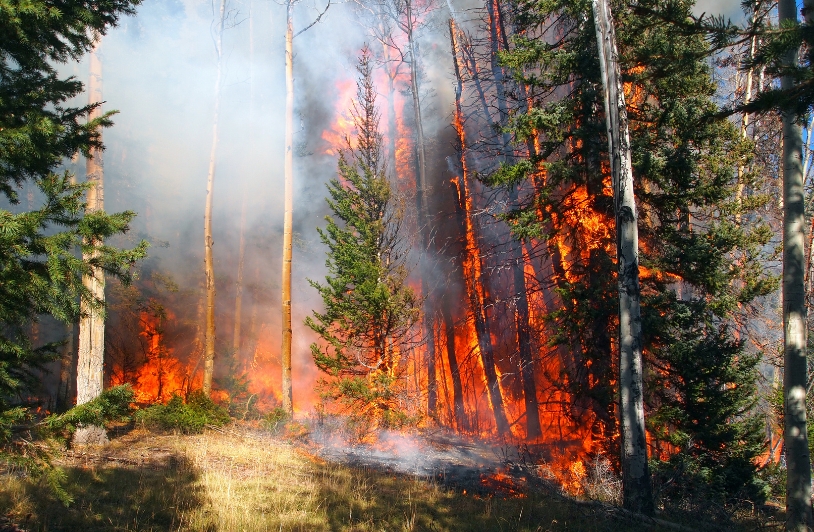Only About 1% of All Wildfires Cause Up to 93% of Scorched Land Per Year
It’s without question that Canada’s wildfires have had a major impact on millions of citizens in the United States, affecting air quality, raising health concerns and even days-worth of thick, orange-like smoke remaining uncomfortably present throughout various locations — making it near impossible for many residents to engage in their daily routines.
A recent article in The Guardian stated that, “There are more than 400 wildfires burning across Canada, with many out of control, according to officials. A third of the fires are in the boreal forest in the eastern province of Quebec, a place not used to dealing with large blazes.”
The negative impact we have seen as a result of the Canadian wildfires is rare, and experts note there are positive implications as well. According to wildfire expert Dr. Janice Coen, a project scientist based in the Mesoscale and Microscale Meteorology Laboratory at the National Center for Atmospheric Research, most wildfires actually benefit our environment rather than hurt it.
“If we take what ecologists have learned, then we would say that most of those fires which aren’t necessarily negatively impactful on humans, do good things to the environment,” Coen said. “They cycle nutrients, they reduce decomposing trees, they keep the forest littered down. So it’s not a question necessarily of reducing ignitions, but how we see those few exceptional events and what conditions support them.”
Coen also said that in regards to the U.S., nearly all fires are put out at manageable sizes, far earlier than many may think, and certainly before they have a negative impact on citizens many miles away — which we’ve seen in recent days.
“So if you look at the data on wildfires and what they burn, if we take the U.S. for example, nearly all of them, like 98 or 99% of [wildfires] are put out at sizes before they reach 100 hectares in size,” Coen said. “So only a few percent get above that. But when we look at that few percent of the biggest, those exceptional wildfires, they produce 85% to 93% of the area burned. So only a few percent of wildfires do most of what we’re talking about when we talk about the wildfire problem.”
Coen noted that many people may look at the Canadian wildfires an anomaly, but she believes it’s anything but that — rather it’s normal for boreal forest — and there is a certain period, what she believes is roughly every seven or eight years, where Canada experiences a lot of wildfires simply due to the nature and climate of its forests.

While wildfires are rare to expand beyond state or in the most recent case, country lines, it does happen, and what residents in areas like New York, New Jersey and beyond were experiencing, was not something unheard of.
In New York City, schools and outdoor activities were restricted as they once were in the early surge of the 2020 COVID pandemic, masks were being handed out to residents and levels of the air quality index were at a whopping 484 out of 500. Hospitalizations also saw a sharp increase in patients as a result of the poor air, resulting in respiratory and cardiovascular struggles.
Unfortunately, citizens are still at risk. Just this past weekend, in Detroit, the air quality index rose as a result of the Canadian wildfires, according to information obtained by Detroit Free Press.
“After a week of good-to-moderate air quality, Detroit’s air quality index (AQI) has jumped back up to unhealthy numbers. As of Saturday afternoon, Detroit’s air quality index was 134, according to AccuWeather, resulting in an unhealthy air quality classification. Poor and unhealthy air quality ratings are most likely to be felt by sensitive groups, occasionally causing difficulty breathing and throat irritation even for healthy individuals. According to the National Weather Service, the recent increase is due to the Canadian wildfires as the smoke continues to drift south. Canadian wildfires also contributed to unhealthy air quality earlier this month and in late May.”
Colorado fell victim to smoke from western wildfires just two years ago despite no fires being present in the area, proving that the impact of wildfire smoke can descend through many miles. This is a result of the smoke being injected deep into the atmosphere at the level of airplanes and even beyond, into the stratosphere, which then causes the smoke to carry long distances and descend into numerous regions — sometimes hundreds of miles away.
Are these fires a direct result of climate change, and do people need to worry about an increase in wildfires occurring? In a follow-up email, Coen said not necessarily, and claims that while climate is immensely important, “both in producing regions with seasonal conditions susceptible to wildfires as well as the short-term days of weather that can spread them, and these change over time,” it is not often the sole reason for widespread wildfires.
“The regional, seasonal conditions — what people typically think of as climate — are not enough on their own to create large fires,” said Coen. “In addition to the perpetually changing climate producing a favorable large-scale, regional seasonal susceptibility, fires also need a local weather pattern that causes the fire to spread. Often, this is some kind of wind event — downslope windstorm, thunderstorm gust front, pre-hurricane winds — but fires can also create their own winds.”
To summarize Coen, climate affects both seasonal susceptibility and local weather patterns in creating wildfires. Wildfires often start due to weather patterns such as downslope winds, hot, dry air as well as lightning, which is quite a common ignition source in areas that are less populated — especially in the wilderness such as boreal forest. No one wildfire is created due to the same reason, as year to year variability in weather patterns and human impacts always changes. Underlying Susceptibility of areas or crops that are prone to fire because of weather patterns is also a main factor.
Wildfires are frequently managed, and much of the time, benefit the local environment to which they are uniquely located. While the impact from wildfires can occasionally impact millions of people throughout the country in some way — as we are seeing once again in Detroit and other cities in the last few days — there is nothing for citizens to worry about regarding an excess of spreading fires, or an increase in the consistency of poor air quality looming on the Earth.




